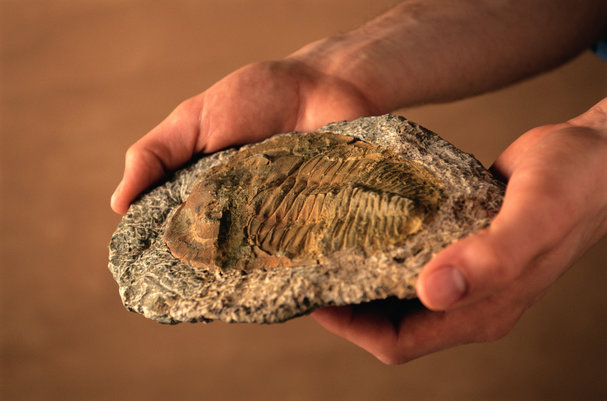
Credit: GETTY
Encouraging palaeontologists to stop hiding the bones
New preprint services could bring niche scientific communities into the open.
23 August 2017

GETTY
A preprint server for palaeontologists is one of six specialized archives released on an open-source preprint platform on 18 August 2017. Launched to promote open science to traditionally reluctant researchers, the preprints are among a growing number of niche repositories.
“I hope PaleorXiv will be the spark needed to get palaeontologists to see the value in preprints,” says palaeontologist Jon Tennant, a recent PhD graduate of Imperial College London who set up the archive to share data on the fossilized remains of plants and animals.
PaleorXiv was built using a shared infrastructure for operating preprints developed by the not-for-profit Center for Open Science in 2016. The open-source platform currently hosts 14 servers and more than 3,500 articles, including SocArXiv (social sciences), PsyArXiv (psychology) and EngrXiv (engineering), as well as the six latest releases: INA-Rxiv (Indonesia), LISSA (library and information science), MindRxiv (mind and contemplative practices), NutriXiv (nutritional sciences), SportRxiv (sport and exercise), and PaleorXiv.
Code for the ancients
Since the launch of the popular physics preprint server, arXiv, in 1991, a repository dedicated to biology was established in 2013, known as BioRxiv, and just last week, the American Chemical Society released the beta version of ChemRxiv for chemistry.
But despite a dedicated section for palaeontology on BioRxiv, few were posting early versions of their manuscripts on the server, with only 15 papers uploaded in four years.
Tennant, a strong advocate for open science, wanted to encourage his peers to share their drafts by creating a repository specifically for them. He engaged them at every stage in the process: the submission guidelines were drafted and reviewed by palaeontologists over social media and through e-mail. Members of the steering committee were recruited through Twitter.
Niche fields demand particular attention to detail, as was quickly revealed to Tennant during online discussions. Naming new species, for example, is regulated by the International Code of Zoological Nomenclature. Each species is assigned a name that includes the year of the publication and researcher who first described the species. For instance, the taxon Dinosauria was named by Richard Owen in 1842 and is listed as Dinosauria Owen, 1842.
But the status of a fossil described in a preprint can change during the peer review process if the species has been previously named or is not unique enough to classify as a new species. The PaleorXiv committee therefore introduced guidelines requiring that submitted preprints redact name changes to prevent misinformation.
Naming flies
At its launch, PaleorXiv had 16 preprints in the server. “While I don’t see us as a direct competitor to larger servers like BioRXiv, these initial numbers emphasize the importance of community-led platforms, and standards for publication developed by and for the community,” says Tennant.
Jessica Polka, the director of ASAPbio, a preprint advocacy organisation, says engaging researchers through a community-driven process provides the push necessary for a preprint to take hold in a discipline.
Viktor Baranov, a taxonomist from the Senckenberg Research Institute has welcomed the arrival of PaleorXiv. “Most palaeontology journals are behind paywalls and need a push for more openness and data availability,” he says.
Baranov was one of the first researchers to answer the call for PaleorXiv article submissions. He shared a manuscript that described a new species of aquatic fly found in Burmese amber, estimated to be approximately 100 million years old. In a few days since PaleorXiv’s launch, Baranov’s paper has been downloaded seven times, which is “a win for such a specialized paper,” he says.
Following PaleorXiv submission guidelines, Baranov has since also corrected the species and genus name for the fly.
